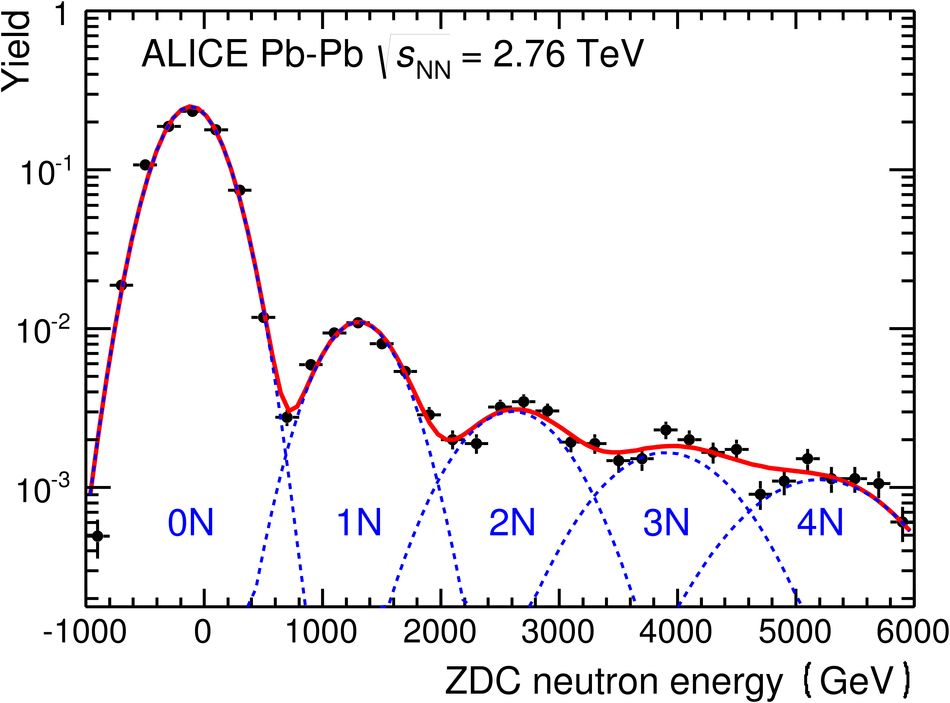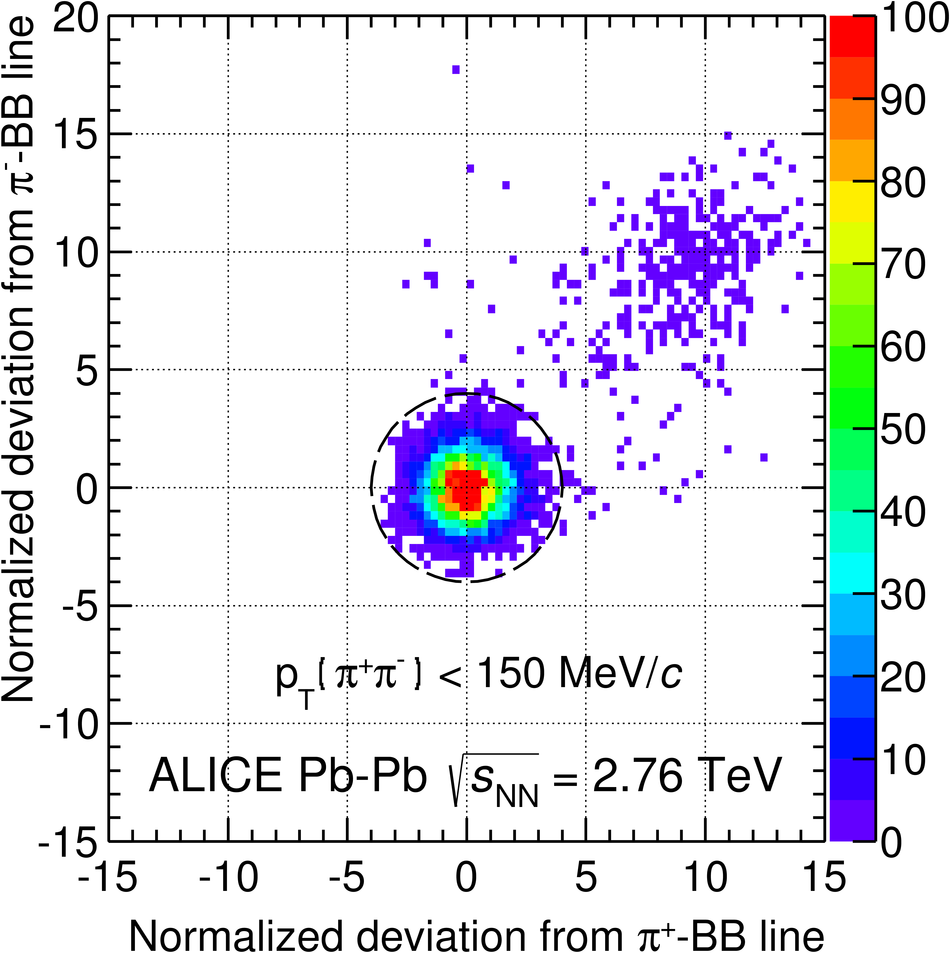We report the first measurement at the LHC of coherent photoproduction of $\rho^0$ mesons in ultra-peripheral Pb-Pb collisions. The invariant mass and transverse momentum distributions for $\rho^0$ production are studied in the $\pi^+ \pi^-$ decay channel at mid-rapidity. The production cross section in the rapidity range $|y|<~0.5$ is found to be $\mathrm{d}\sigma/\mathrm{d}y = 425 \pm 10 \, (\mathrm{stat.})$ $^{+42}_{-50} \, (\mathrm{sys.})$ mb. Coherent $\rho^0$ production is studied with and without requirement of nuclear breakup, and the fractional yields for various breakup scenarios are presented. The results are compared with those from lower energies and with model predictions.
JHEP 09 (2015) 095
e-Print: arXiv:1503.09177 | PDF | inSPIRE
CERN-PH-EP-2015-082






